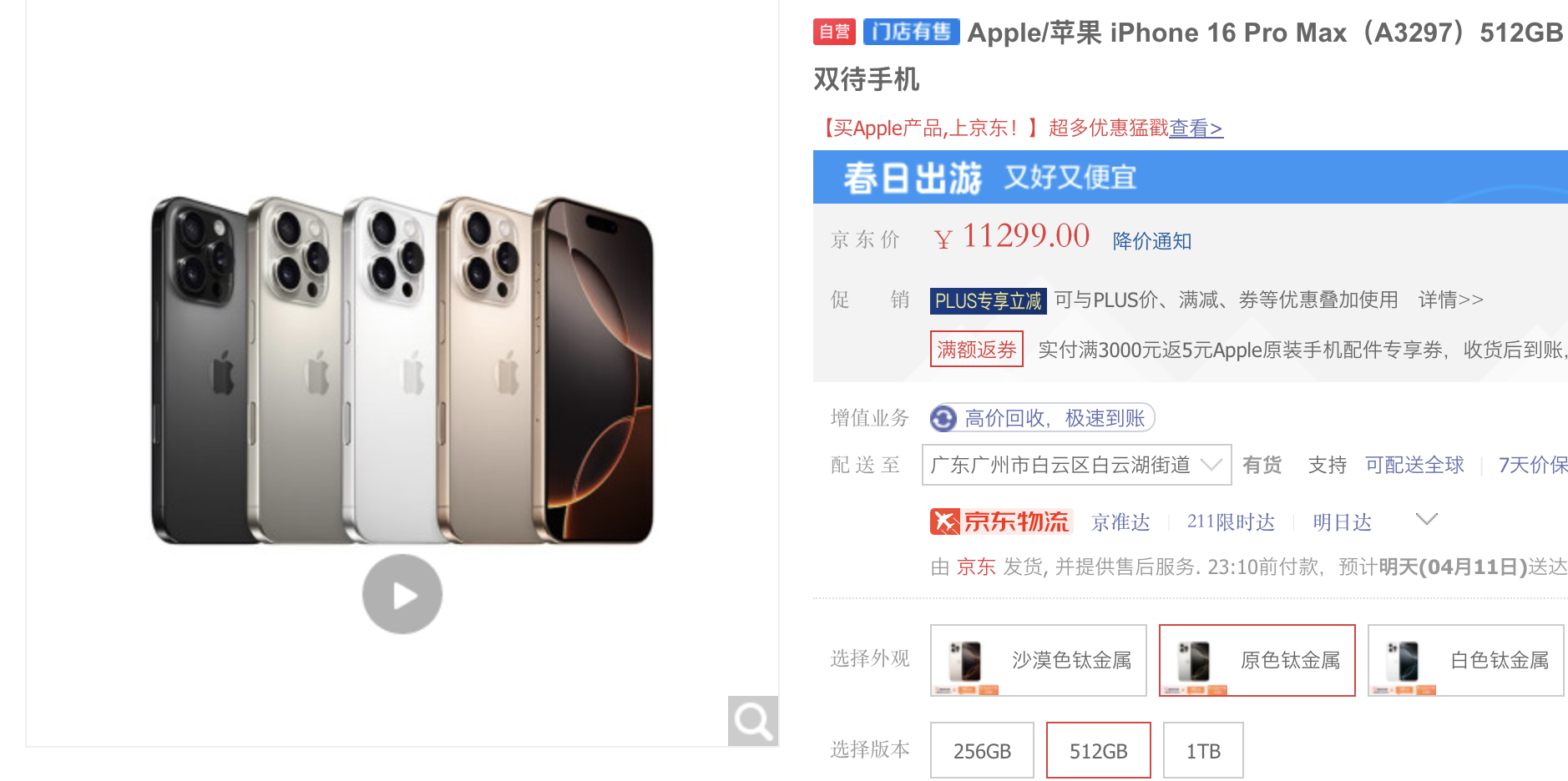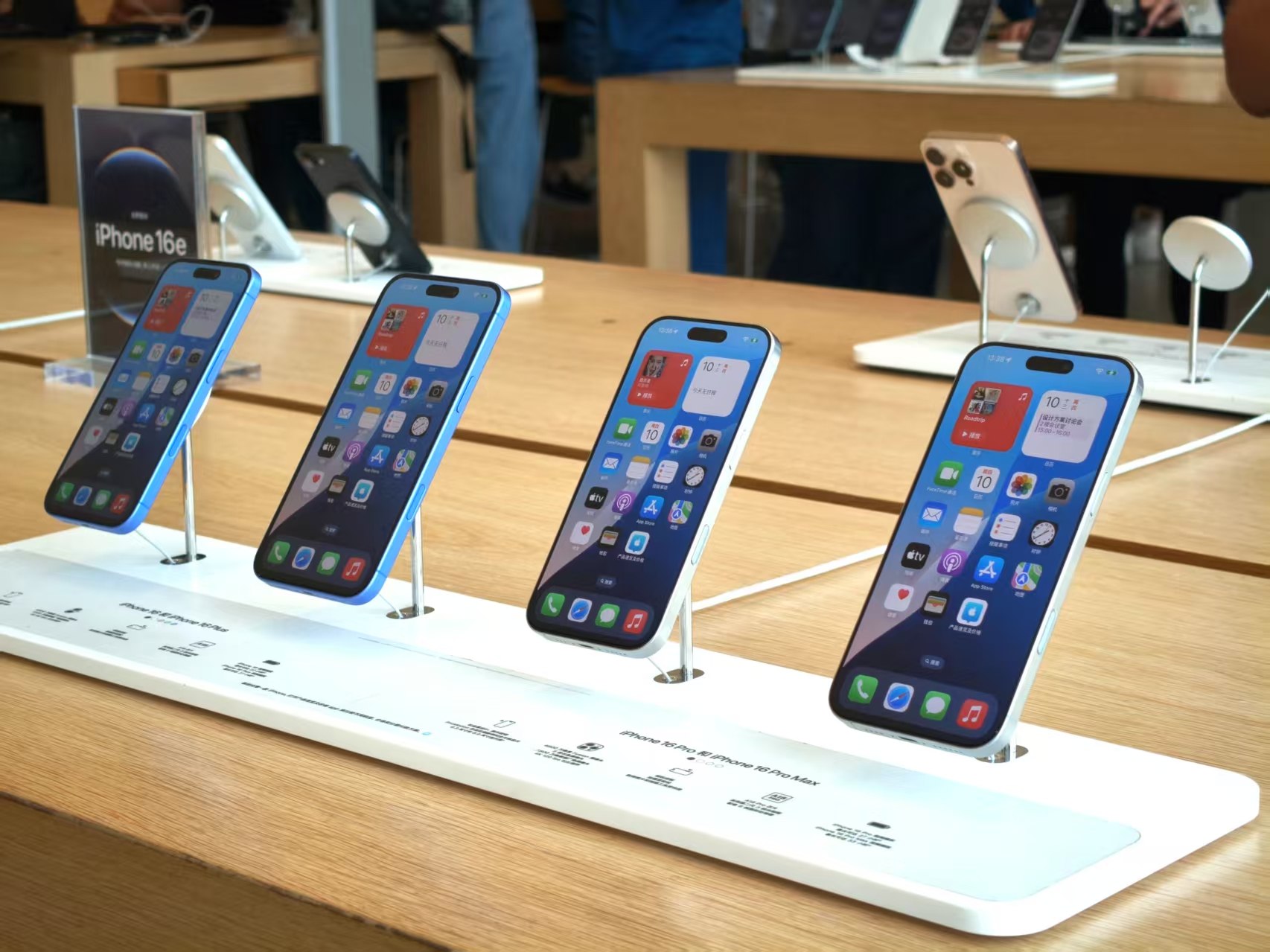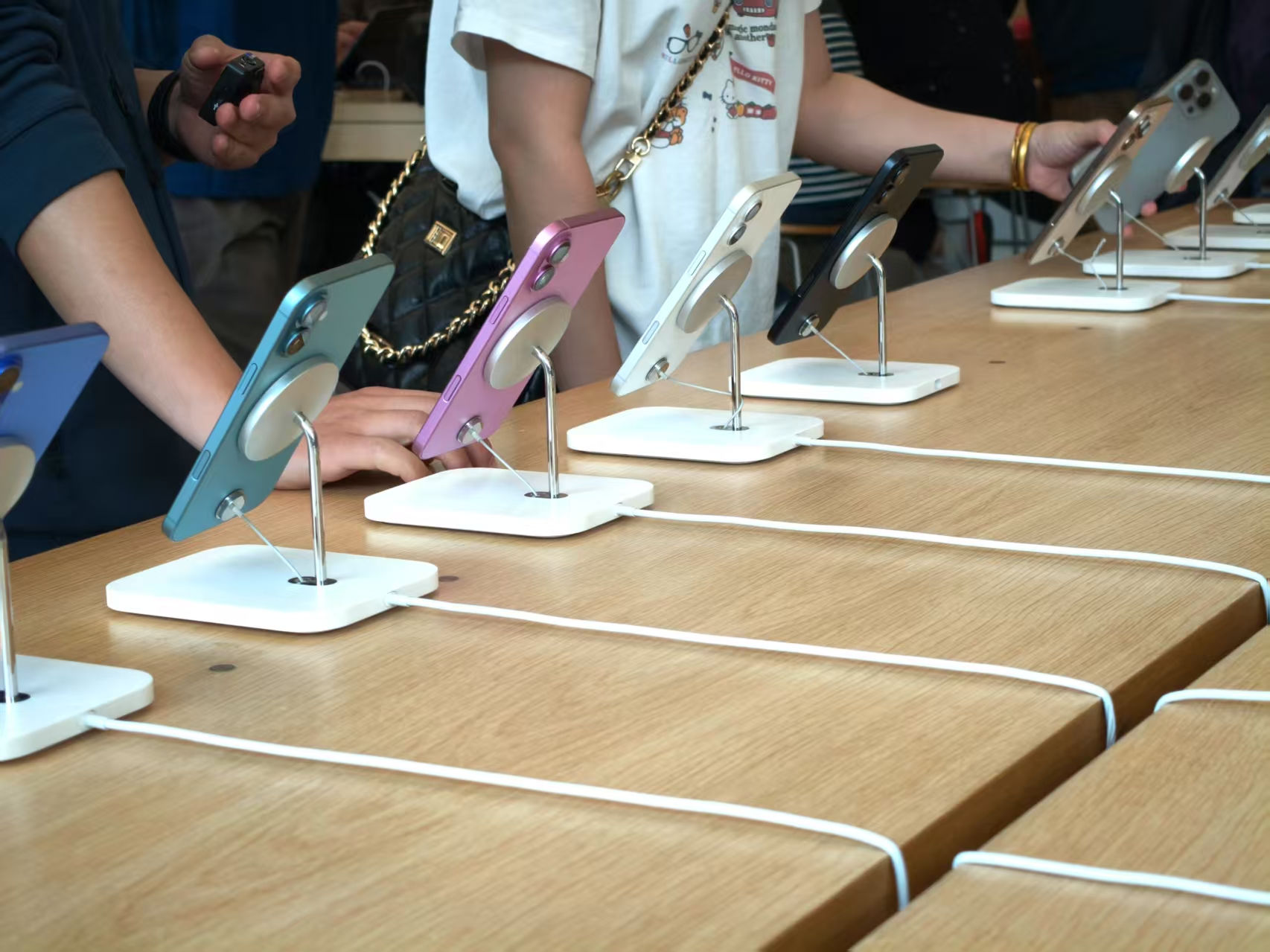iPhone Global Price Surge Imminent! Consumers Remain Calm and Vigilant, Domestic Phones Eagerly Anticipate Opportunity
![]() 04/11 2025
04/11 2025
![]() 484
484
For the current US market, no definitive conclusion can be drawn. Just a few days ago, Lei analyzed that the base model of the iPhone was unlikely to exceed 20,000 RMB in the US. However, the US government dealt a blow by imposing a whopping 125% tariff.
The US imposition of a 125% tariff on China, coupled with a 90-day reduction in tariff penalties for most other countries and regions, has significantly impacted global trade. Lei observed numerous discussions about iPhone price hikes on platforms like Weibo and Xiaohongshu. Dealers and second-hand shops that Lei usually follows have unanimously increased iPhone selling and buyback prices.
So, when will this new round of iPhone price hikes come to an end? And more importantly, should we rush to "snap up" iPhones? Let's see the professional analysis by Lei Technology.
iPhone prices in official channels remain stable, with limited room for short-term hikes
Firstly, based on current trends, iPhone prices in official channels and among major distributors remain stable: Apple's official stores and Tmall's flagship store still maintain their original prices, and authorized dealers like JD.com, Coodoo, and Sunion haven't raised prices due to tariff changes.

Image Source: JD.com
Of course, official stores and authorized dealers have their own pricing systems, which largely reflect the brand's anchoring role, leaving little room for free pricing. In contrast, second-tier and non-authorized dealers have more flexible pricing. For example, a dealer's Huaqiangbei "wholesale price" table on Xiaohongshu shows that iPhone 16 Pro Max and 16 Pro prices have increased since April 8th, with a daily hike of about 100 yuan.
However, in Lei Technology's view, the slight iPhone price increase at this stage isn't directly related to tariff hikes but rather reflects changes in secondary market supply and demand, which can be considered an "indirect impact" of tariffs.
To clarify, we need to understand the iPhone's pricing model.
As everyone knows, domestic iPhone pricing (excluding used, refurbished, and customized models) has two components: Apple's official dealer system pricing (official price) and non-authorized dealer free pricing. The former has a relatively fixed price due to contractual constraints, while the latter is set by the store based on its actual situation. Simply put, if wholesale prices are high and sales are good, prices will slightly increase; if wholesale prices are low and sales are poor, prices will slightly decrease.

Image Source: Lei Technology
Although the new tariffs between China and the US have taken effect, they don't apply to products already arrived and cleared at customs. Whether in China (chips) or the US (complete phones), iPhone "official prices" won't change due to tariffs until inventory is exhausted. From this perspective, as China has inventory of both complete phones and components like chips, theoretically, domestic iPhones can even hold out longer.
Secondly, the vast majority of models sold in the Chinese market (domestic iPhones) are locally produced in China. Vietnamese production capacity is mainly for export to "de-Chinaizing" countries, while Indian production capacity caters to local Indian regulations. Since domestic iPhones originate in China, no tariffs are imposed.
Therefore, before chip inventory is exhausted, tariff impacts won't be directly reflected in iPhone prices. Similarly, before US iPhone inventory is depleted, US-version iPhone selling prices won't be directly affected by tariffs. Incidentally, Apple recently "rushed" a large batch of iPhones to the US, clearing customs before the new tariff policy took effect, effectively "extending the life" of the US market.
Moreover, if this price hike were truly due to tariffs, why isn't the 1TB iPhone 16 Pro Max, with the highest selling price, seeing the biggest increase, instead of the more affordable 512GB iPhone 16 Pro, which is bought by more people?
Global Price Surge Imminent: Will iPhones Become Financial Products?
After discussing the direct short-term impact, let's address indirect and long-term effects.
Firstly, tariffs will inevitably increase the hardware costs of the iPhone 16 and iPhone 17 series. However, due to China and the US's different positions in the "iPhone supply chain," even if tariff figures are the same, the cost impact of China's tariffs on the US will be reflected in the US iPhone version. China only pays tariffs on imported US chips, while the US imposes tariffs on imported complete phones. The "sensitivity" to tariffs on both sides is markedly different.
As a shareholder-responsible listed company, Apple can't bear 100% of tariff costs. Splitting part of the increased costs and incorporating them into product prices is Apple's best option. However, as the Americas are Apple's largest single market (Apple's Q1 2025 earnings report ranks net sales by region as follows: Americas, Europe, "Greater China," Japan, and other Asia-Pacific regions), Apple can't pass all tariffs onto American consumers.

Image Source: Apple
In contrast, it aligns more with Apple's interests to implement a "small global price hike" for the iPhone, coupled with storage upgrades, and use the "more for more" strategy of low cost and high return to mitigate the impact of iPhone price hikes on user demand.

Image Source: Lei Technology
As the iPhone 17 is expected to see a significant price hike, and even after this batch of inventory is exhausted, the iPhone 16 may follow suit, prompting some consumers to "seize the moment" and buy the iPhone 16 series.
Due to this sudden surge in user demand, the iPhone 16 price will inevitably increase slightly, explaining why the wholesale price of iPhones from dealers like Huaqiangbei has started to rise slightly before tariffs are imposed, and the increase is for the "sales mainstay" 512GB models, not the 1TB models.
Furthermore, on the evening of April 9th and the morning of April 10th, Lei visited the Apple Store in Guangzhou Tianhuan Square twice. Lei observed no rush to buy iPhones, and customer flow even slightly decreased due to construction work on the second floor. In the store's "activation" area, there were 4 customers activating iPads and only 1 customer unboxing a new iPhone.
Lei briefly exchanged views with five consumers. All five believed the iPhone 17's selling price would increase, three thought domestic phone prices would also rise simultaneously, and the other two weren't too concerned about domestic phones. Notably, none believed old iPhone models would "urgently increase in price" in the short term, nor did anyone come with the mindset of "snapping up" a phone.
Mr. Li, who came to the store to buy a new iPhone because his old one was accidentally damaged, even directly said, "They (Apple) earned enough last year, and now adding tariffs will just mean they earn a bit less. With domestic phones chasing after them, they will earn less with tariffs and lose more with price hikes."
iPhone Price Hikes Are Irrelevant; Domestic Phones Have Already Increased
Mr. Li has his own views on future Apple price hikes. But "domestic phones chasing after them" is indeed a challenge Apple must face in recent years.
In the US domestic market, no phone brand poses a substantial threat to Apple. With the US opening up a 10% tariff entry for some countries, even if Apple can't bring its production lines back to the US, related enterprises can bypass the US's high tariffs on China and deliver low-priced iPhones to the US using the "Yangcheng Lake crab" model.
But the Chinese market is different. Domestic phone manufacturers are building their own "technological moat" in the high-end market, supporting high prices with new technologies: Huawei's Mate series focuses on high-end positioning, giving new value to phones with technologies like triple folding and red maple leaf original color; Xiaomi 15 Ultra and OPPO Find X8 Ultra are breaking through with imaging and system ecology. It's evident that domestic phones are gaining ground in iPhone's traditional strongholds, waiting for it to show weaknesses.
Against this backdrop, the iPhone is even less likely to "shoot for the moon" without limits.

Image Source: Lei Technology
Moreover, from an economic perspective, there's a "ceiling effect" on iPhone price hikes, meaning "when the selling price exceeds the consumer's psychological threshold, market demand will plummet." Taking the Chinese market as an example, Lei Technology believes that if the Pro Max model's starting price exceeds the 15,000 yuan mark, its target user group will quickly narrow.
In "The Wealth of Nations," Adam Smith noted that "market prices are naturally regulated by the interaction of supply and demand," which is also the theory of the "invisible hand" in economics. In simpler terms, "products that are too expensive won't sell well; products that don't sell well will naturally decrease in price." The Apple Vision Pro and Apple Watch are prime examples within Apple's ecosystem.
In a January 2025 report, market research firm IDC predicted that the market share of smartphones priced above 600 USD (high-end models) in the Chinese market will reach 30.9% in 2025. It's safe to say Chinese consumers have already accepted domestic high-end phones. Coupled with IDC's prediction of 10 million units of domestic foldable phones and 118 million units of AI phones shipped in 2025, Lei dares to say that China is the market least afraid of iPhone price hikes.
For Chinese users, whether iPhone prices hike or not isn't a particularly important issue. After all, domestic flagship models are already ready to take over before iPhone price hikes.





